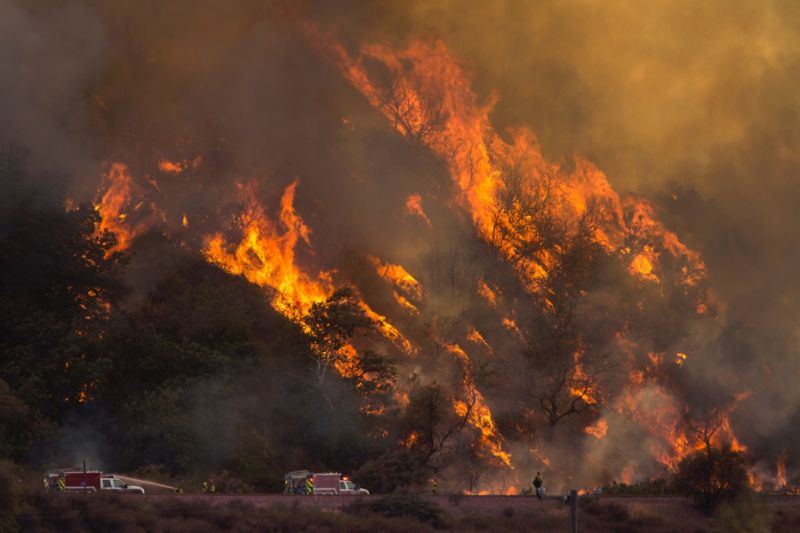Scientists model dynamic feedback loop that fuels the spread of wildfires

Enlarge / Flames spread up a hillside near firefighters at the Blue Cut Fire on August 18, 2016 near Wrightwood, California. (credit: David McNew/Getty Images)
From a physics and chemistry standpoint, fire is an incredibly complicated phenomenon-so much so that 19th century physicist Michael Faraday built an entire series of six lectures around the flame of a single candle at the Royal Institution in 1848. Fuel, heat, and oxygen, combined under the right conditions, ignite into a sustained chemical reaction: fire. Add in factors like conduction, convection, radiation, and any number of environmental factors, and that fire can rapidly spread out of control.
Scientists have been trying to better delineate how wildfires spread for decades, and understanding the complicated fluid dynamics at work is key to those efforts. Rodman Linn, an atmospheric scientist at Los Alamos National Laboratory, does computational modeling of how fires interact with the surrounding atmosphere to predict how a given fire behaves. It's a challenging phenomenon to model, since it involves the interaction of several different processes. Linn described the various factors that influence how a wildfire spreads in an article in the November issue of Physics Today.
Most models currently in use are based on seminal work done back in 1972 by Richard Rothermel, an aeronautical engineer who developed the first quantitative tool for predicting the spread of wildfires. Every kind of fuel has an ignition point (also known as a flash point), a measure of how much energy is required to ignite that fuel. Rothermel's model determined that ignition point, and then factored in wind speed, the slope of the ground, and other critical factors to calculate the rate of ignition required for a nascent wildfire to spread quickly.
Read 9 remaining paragraphs | Comments